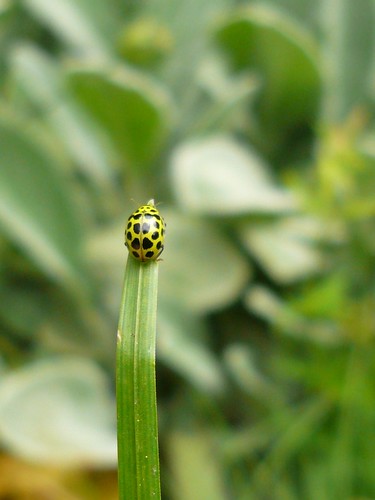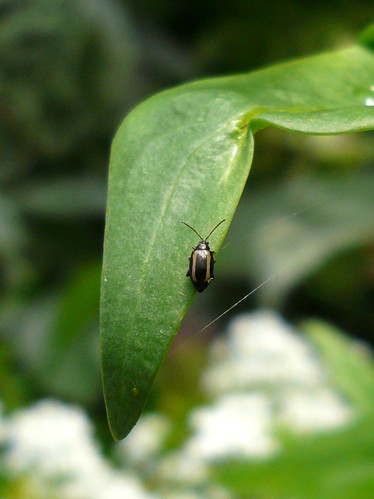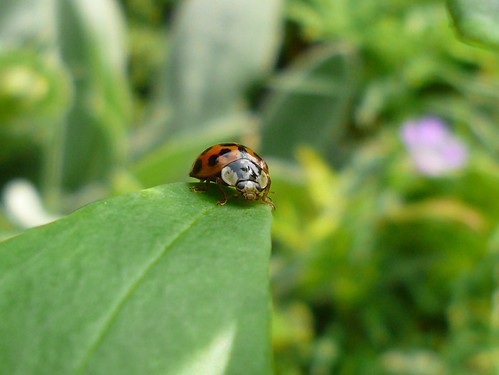This is the most likely animal to be the adult of those cute yellow larvae that hide under cuckoo-spit froth on plant stems in the spring. There are a number of similar species, but this is by far the most common. There is some variation in colouring, from pale brown to dark, even stripes. This photo shows the sucking mouthparts (like a built in straw) that indicate that it is a true bug. They have powerful legs that allow them to hop into the air for long distances when alarmed.
Monday 5 October 2009
Common Froghopper (Philaenus spumarius)
Thursday 1 October 2009
22-Spot Ladybird (Psyllobora 22-punctata)

22-Spot Ladybird (Psyllobora 22-punctata), originally uploaded by Pipsissiwa.
This ladybird is probably the most striking of them all. Although cutely tiny (it is sitting on a blade of grass), the yellow colouring is unmissable even from some distance away. A brighter yellow that the 14-spot ladybird, with more and better defined spots.
Harlequin Ladybird (Harmonia axyridis)
A foreign invader that is significantly larger than our native species and is currently considered a threat to them due to competition. It can be tricky to identify as the markings vary from this orange/red with black spots to completely black, but the size is a give-away. There have been a few in the garden over the last year or two, but not too many... yet. I still seem to have plenty of native species of all shapes and sizes.
Beetle (Oulema melamopa)

Beetle (Oulema melamopa), originally uploaded by Pipsissiwa.
An attractive small ground beetle, with a black head, red thorax and green/black metallic abdomen/wingcases. I was lucky to spot this one as they are very fast and eager to vanish into the undergrowth.
Flea Beetle (Phyllotreta nemorum)

Flea Beetle (Phyllotreta nemorum), originally uploaded by Pipsissiwa.
Flea beetles are much as the name suggests. They are tiny beetles that jump like fleas. They have obviously thickened back legs for jumping. Many are pests of crops like turnips and potatoes, but I've never noticed any problems with the several species in my garden. This one is particularly attractive. Usually they are a uniform black or brown, occasionally with some faint markings, but this species has these lovely clear stripes.
Rosemary Leaf Beetle (Chrysolina americana)

Rosemary Leaf Beetle (Chrysolina americana), originally uploaded by Pipsissiwa.
When I spotted this beetle on some variegated sage, my first thought was how exotic it looked. It is surprisingly large and I love the oil-on-water colouring and lines of dimples. Sadly it flew away (an impressive sight) and I haven't seen another in the garden to date.
Subscribe to:
Posts (Atom)

